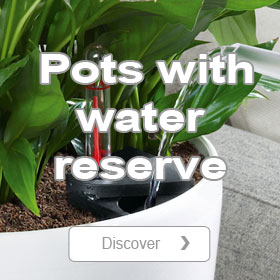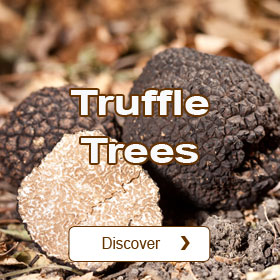In the event of drought or heatwave
Prevention
• Prevention is best
• Protecting your plants in winter
• Protecting your potted plants in winter
• Painting fruits trees
• Over-wintering summer-flowering bulbs
• What to do when there is snow in the garden ?
• What do I need to do in case of harsh frost ?
• In the event of drought or heatwave
• What do I need to do after a drought's episode ?
• Diagnostic
• Cure
• Deficiencies
• Fungus
• Diseases
• Parasites and insects
• Plant Bugs
The thermometer stays high and no rain is forecasted? Plants suffer if we go from a simple lack of water to a prolonged drought. Find here a few tips to react in case of urgency.
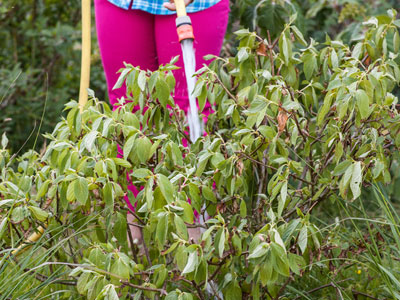
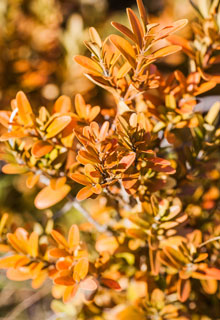
When the Common Box becomes yellow, it is no longer lacking of water but it suffers from drought.
Is it a drought or a lack of water?
Summer months can have period more or less humid, before or after periods of drought or heatwaves. Plants suffer from these sudden changes of atmospheric conditions and they get thirsty quicker. There are two different stages to distinguish from:
- Lack of water: the plant's growth slows down but it shows very few signs of suffering. The flowering buds (for summer flowering plants) fall or no longer form, the leaves fall more than usually (they give the impression that autumn is on the way), they can take on a matt tint and wither a little. A good watering and everything gets back to normal.
- Lack of water: the plant's growth slows down but it shows very few signs of suffering. The flowering buds (for summer flowering plants) fall or no longer form, the leaves fall more than usually (they give the impression that autumn is on the way), they can take on a matt tint and wither a little. A good watering and everything gets back to normal.
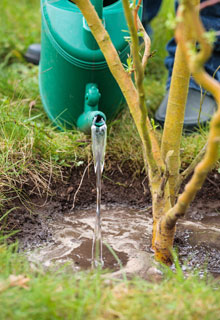
Create a little basin around the roots to increase the watering capacity if needed.
Water as soon as the foliage starts bending
Plants which require a lot of water see their foliage taking on a paler tint, then become soft quickly. Water them as soon as they reach this stage, not excessively though (5 l per 1m2 for example). This keeps them as they are, even if water lacks a little but they will not find themselves in a drought situation.
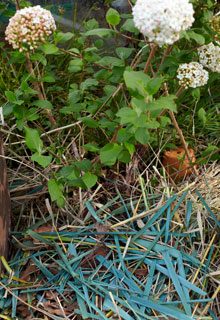
An unsightly mulch but efficient in case of drought.
No mulch? Do not panic!
When the weather is dry, aesthetics is no longer the priority if you need to save plants. Any material which can be used to cover the soil is good to use: cardboard boxes, green waste, old carpet… You can even spread out old tiles on the ground or stones. Beware though: these materials can store up heat and send back sunrays towards the foliage's underside. Mulch protects the roots and the stump, sometimes to the foliage's detriment.
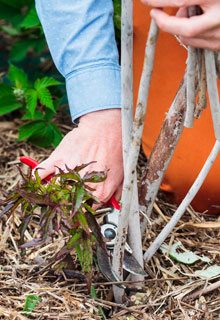
Hard pruning is better: It will grow back!
If you can't water
In the case of drought, the best solution is to prune the plants that you cannot water. Do not hesitate to cut the branches by half. This is better than to lose the plant! In some cases, certain plants go into dormancy as if it was winter. This phenomenon happens when the weather gets dry progressively and not suddenly. This is called the 'estivation', just like 'hibernation'. When the conditions are more humid, the plant starts forming leaves, just as in the spring and it becomes sensitive to early frost in late autumn. Some, like Apple trees can blossom again in the autumn, the flowers obviously not having enough time to produce viable fruits before winter. So everything is not lost before the return of rain!


















